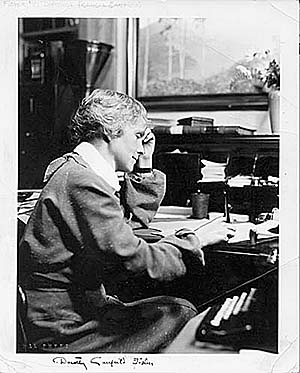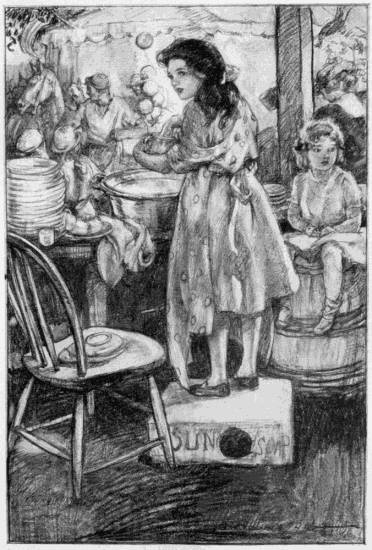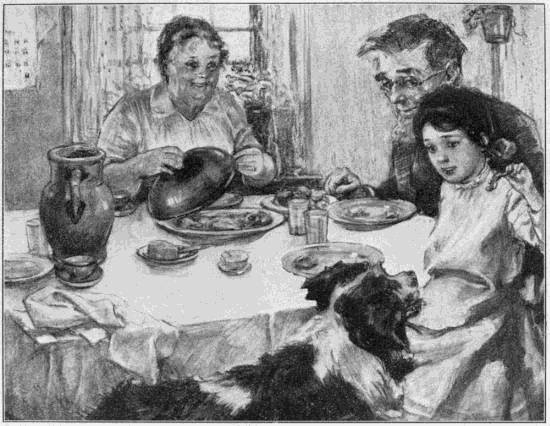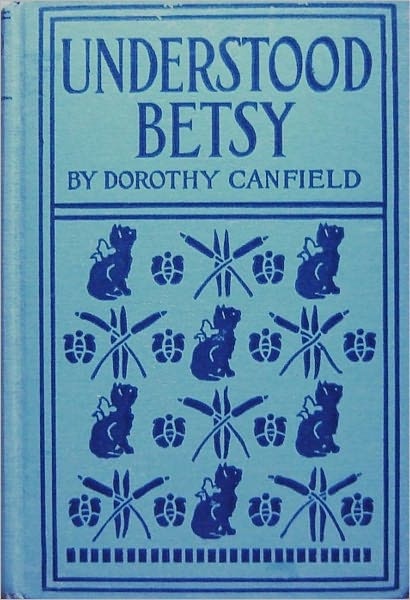In 1899 Dorothy Canfield received a B.A. from Ohio State University, then went on to receive a Ph.D. in Romance languages from the University of Paris and Columbia University. At a time when women rarely attended college, Canfield was distinguishing herself as a serious academic. In addition to her college and graduate school degrees, she received more than half a dozen honorary degrees from other prestigious universities. In 1907, Dorothy Canfield married John Redwood Fisher and they had two children. Just a few years later, the young mother traveled to Rome to study under Maria Montessori. Impressed by Montessori’s revolutionary methods, Fisher worked to bring the Montessori Method to the United States. In addition to translating Montessori’s writing, Fisher wrote five books of her own based on the Montessori Method. Understood Betsy is one of the fiction novels Fisher penned that articulated the Montessori Method. The tender and charming story opens with a sickly, fragile, emotional, and immature Elizabeth Ann and follows her through a stunning metamorphosis into an independent and vibrant Betsy.

Fisher’s keen intelligence, delightful writing style, and perceptive nature shine through the pages of Understood Betsy. While the story was intended as a vehicle through which Fisher could give flesh to the Montessori Method, it is obvious that Fisher sincerely believed that Montessori understood how to draw out the very best in children. In this story, Fisher gives an authentic celebration of childhood. The dichotomy between the progressive industrial model of education and the country one-room schoolhouse is so obvious that it could be argued that Understood Betsy is a better defense against the modern school system than John Taylor Gatto’s books.
“An older girl was reflected (in the mirror) also, near Molly, a dark-eyed, red-cheeked, sturdy little girl, standing very straight on two strong legs, holding her head high and free, her dark eyes looking out brightly from her tanned face. For an instant Betsy gazed into those clear eyes and then… why, gracious goodness! That was herself she was looking at! How changed she was! How very, very different she looked from the last time she had seen herself in a big mirror! She remembered it well – out shopping with Aunt Frances in a department store, she had caught sight of a pale little girl with a thin neck, and spindling legs half-hidden in the folds of Aunt Frances’s skirts. But she didn’t even look like the sister of this browned, muscular, upstanding child who held Molly’s hand so firmly.”
While Understood Betsy is a robust articulation of excellent educational pedagogy and can be deeply inspiring to homeschool parents, the real flair is the storytelling itself. Because Fisher so passionately believes in traditional and natural childhood, complete with chores, independence, and free play, the reader is delighted by the everyday life of Betsy, her school friends, and the Putney farm. Fans of Betsy Tacy, Little House on the Prairie, Grandma’s Attic, Little Men, Old Sam: Dakota Trotter, and other twentieth-century children’s classics will feel at home on the Putney farm. Elizabeth Ann (Betsy) is a nine-year-old girl who reads at the seventh-grade level and who struggles with math. Orphaned very early in life, Elizabeth Ann was raised by two aunts and their housekeeper in the city who were “not very rich or very poor.” Despite their well-meaning intentions, Aunt Harriet and Aunt Frances smother Elizabeth Ann and raise her to be a fragile and sickly little soul. When an emergency arises, Elizabeth Ann is sent to live with family in the country where her real life begins in earnest.
“What would Cousin Ann do?”
Life on the Putney farm is simple, healthy, happy and full of opportunities for Betsy to grow into a well-adjusted, confident, capable, and delightful creature. Caring for pets, sewing clothes, helping with chores, and having adventures, Betsy’s life is inspiring and delightful to read about. In several places, Betsy has exciting adventures that reveal to Betsy and the reader just how capable unfettered children can be.

Fisher’s writing style may seem a bit strange to a new reader at first. Typical of the Montessori style, Fisher writes this story for children in a tone that is consistent with how Montessori teachers would speak to their young charges. Fisher opens the story with careful descriptions of the characters and a conversational narrator voice which acknowledges the questions that young readers may have.
“So now you know the names of all the household. And this is how they looked: Aunt Harriet is was very small and thin and old, Grace was very small and thin and middle-aged, Aunt Frances (for Elizabeth Ann called her “Aunt,” although she was really, of course, a first-cousin-once-removed) was small and thin and if the light wasn’t too strong might be called young, and Elizabeth Ann was very small and very thin and little. And yet they all had plenty to eat. I wonder what was the matter with them?”
At first, I found this tone off-putting. While there is a little more of that throughout, Fisher reserves most of the explaining for the first chapter. As Elizabeth Ann evolves into Betsy, Fisher seems to presume that her audience will evolve with Betsy, and the condescending tone disappears. I did note, however, that my children were not bothered by the tone at all. In fact, my eight-year-old felt respected by it. Greta seemed to feel like Fisher was a friend taking the time to explain things that a reader might not intuitively understand.

I have read this story at least three times. It never fails to teach me something, encourage me as a homeschool mom, and delight my imagination. In fact, I confess envy. I wish that I could go and live at the Putney farm. I would love to churn butter with Aunt Abigail, sit at Uncle Henry’s desk, play with Betsy’s kittens, and work alongside Aunt Ann while she makes the syrup. I think this story would nurture any young reader. The writing is a tad challenging (especially with Fisher’s run-on sentences), so I think that giving this one in audio format to the very young is an ideal introduction. Independent young readers would enjoy revisiting this one when they are able to read long chapters. As a read-aloud, this would be a great family read for a wide range of listeners.
Regardless of when and how this story is presented, I think it is one not to be missed. There is an Audible version is very inexpensive and worth listening to. If you wish to support a small press, consider purchasing the Living Book Press edition!

One Comment
Comments are closed.